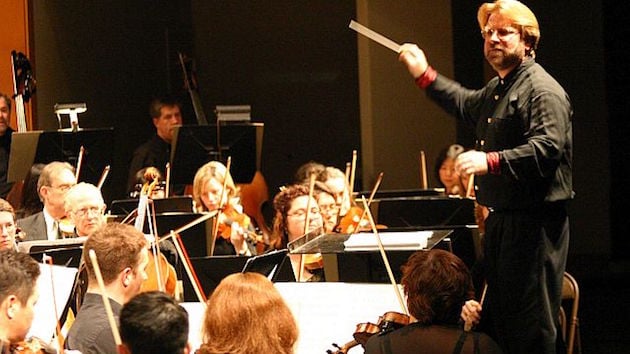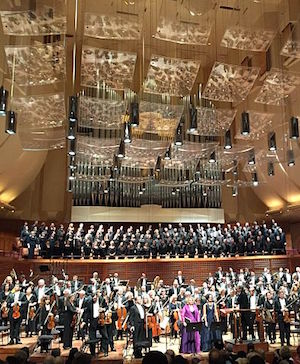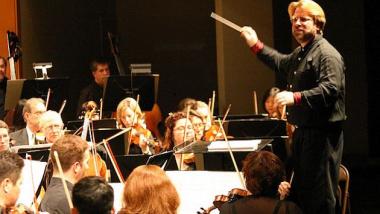

Two of Gustav Mahler’s gargantuan symphonies — No. 2, “Resurrection” and No. 8, “Symphony of a Thousand” — are both part of Bay Area summer repertory. Michael Tilson Thomas and the San Francisco Symphony ended the season last week with four acclaimed performances of the Symphony No. 2, and now Eric Kujawsky’s Redwood Symphony is gearing up for the July 30 concert in San Mateo of the Symphony No. 8.
The 1906 “Symphony of a Thousand” doesn’t take quite that number, but it requires an extra-large orchestra, seven soloists, two choruses, a children’s choir, a brass band, and an organ. This was the last of Mahler’s new works that he conducted in his lifetime; the successful 1910 premiere in Munich was followed by his death the next year.
With the July 30 program, the Redwood Symphony will complete its second cycle of Mahler’s 10 symphonies (and the symphonic Song of the Earth). There are precious few small regional orchestras anywhere that can lay claim to such an achievement.
Redwood Symphony, an all-volunteer orchestra, is dedicated to performing an ambitious, contemporary repertoire as well as the great orchestral classics. The innovative programming and emphasis on education are two reasons why so many of the most talented musicians throughout the San Francisco Bay Area volunteer their time to play in the orchestra.
Bryan Baker’s Masterworks Chorale will supply the vocal power needed for the concert, which will be performed with English supertitles. Soloists include sopranos Marcelle Dronkes, Raeeka Shehabi-Raghmai and Shawnette Sulker; altos Erin Neff and Sally Mouzon; tenor David Gustafson; baritone Bill O’Neill, baritone; and bass Richard Mix.
“The grand first movement is a setting of a Latin hymn,” Kujawsky says. “The hour-long second movement captures the final scene of Goethe’s Faust.” The conductor will give a pre-concert talk, beginning at 7 p.m.
The opening movement is based on a 9th-century Christian hymn for Pentecost, Veni creator spiritus (“Come, Creator Spirit”), music resembling a giant motet, and said by musicologists to be Mahler’s attempt to emulate the polyphony of Bach’s great motets.
Thematically and musically, the symphony’s second part is related to the finale of Arrigo Boito’s Mefistofele and Wagner’s Parsifal — supersized meditations and pleas for mercy, with the voices of angels and “blessed boys” bringing redemption.
Kujawsky says “I love the scale and excitement of the Eighth. There are moments, the ends of the two parts when all of Mahler’s massed forces come together fortissimo, for example, that are truly hair-raising, and can’t be experienced except in a rare live performance. His mastery of large-scale form, pace and transition is phenomenal, and the orchestration is some of his most gorgeous.
“Then there’s the whole melody thing. While Mahler is certainly a very melodic composer, his symphonic movements tend to concentrate on a surprisingly small number of motives. The Eighth, by contrast, has a remarkable melodic fecundity, a whirl of beautiful tunes that not only interact and spin off new melodies, but also relate forwards and backwards in time across the two huge movements.
“It’s this melodic unity, coupled with the common message of love in the Latin and German texts, that makes this one of the greatest of all works to hear communally, with an audience.”
This ambitious project reflects Redwood Symphony’s usual mode of operation, which saw the celebration of the orchestra’s 30th anniversary last year with Stravinsky’s The Rite of Spring and Orff’s Carmina Burana on one program, in a season which also presented Mason Bates’ Alternative Energy, the West Coast premiere of Michael Daugherty’s Cello Concerto Tales of Hemingway, the world premiere of the Redwood-commissioned Henry Mollicone Violin Concerto, plus works by Hindemith, Richard Strauss, Shostakovich, and others.
Kujawsky’s plan is to open the next season with a semistaged production of the Weill-Brecht Rise and Fall of the City of Mahagonny.

